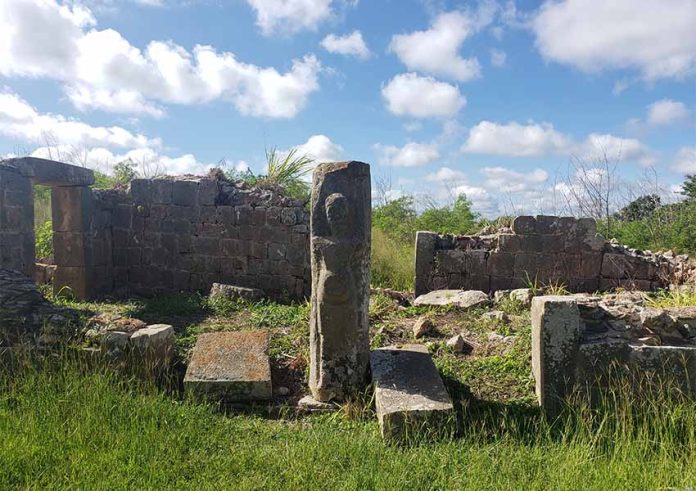Planning to visit Yucatán? Make time to explore some hidden attractions away from the crowds. The state has several lesser-known but still impressive archaeological sites that will give you insight into ancient Maya life. The remains of the ancient city of Oxkintok is an outstanding example.
Oxkintok is located among lush vegetation about 70 kilometers south of Mérida off highway 180. The site’s labyrinth, arches and anthropomorphic statues are key highlights.
The National Institute of Anthropology and History (INAH) says Oxkintok could mean “the city of the three flint suns,” although other interpretations also exist. It was also called Tzat Tun Tzat or Maxacan, according to INAH.
The city was occupied for around two millennia, from about 500–300 B.C. to around A.D. 1200–1450. Its location between trading routes enabled it to gain prominence in the early Classic period (A.D. 300–550), according to INAH, which says the city became wealthy during the beginning of the Puuc region’s development in the sixth century.
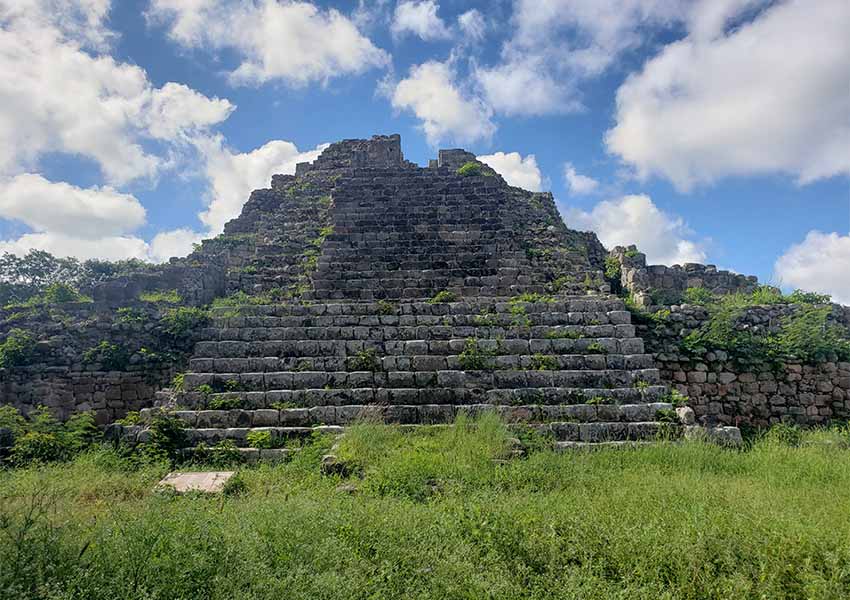
While the site is fairly small, there’s plenty to see: archaeologists have discovered several tombs and burial offerings on the site. Expect to spend two to three hours here to see everything.
Once you enter the site from the north, you can walk up to the Ah Canul Group, a section with several plazas and buildings, including palaces.
As you enter the northern section of this group, you’ll see a pyramid with a doorway-like opening on its side. Nearby is the Pop Palace, identified as one of the earliest buildings on the site and named after a matting design on the floor.
There is also an interesting round platform in this area that may be an altar. Another notable building is a pyramid located to the east with a temple on top. But a must-see in this section is the plaza with anthropomorphic statues.
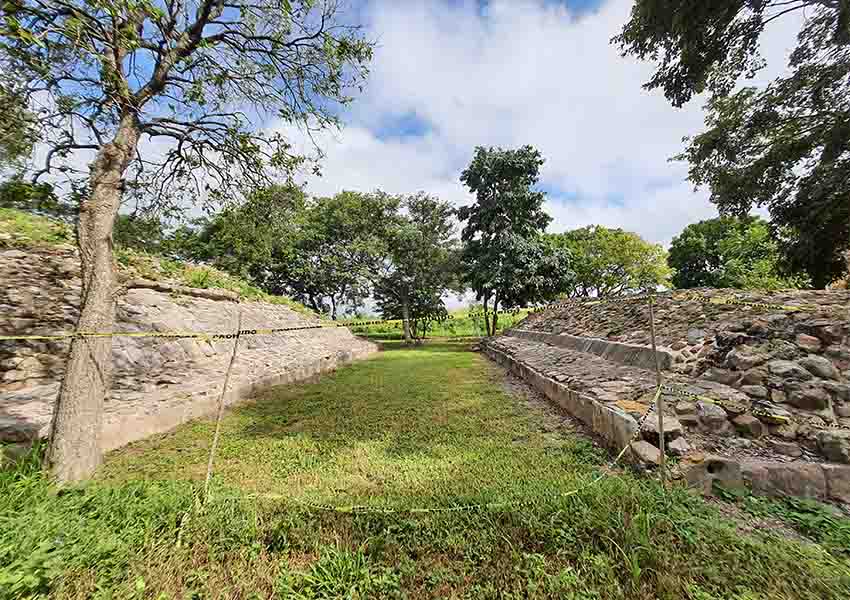
Keep an eye out for the Ch’ich Palace, whose entrance has two statues in fairly good condition that may represent important characters. There’s a notice identifying this palace, so you can’t miss it. Next to it is the Devil’s Palace. There’s a statue here that is thought to represent a skeleton-like person.
Don’t forget to see the plaza towards the east with an arch on a building. You can enjoy some beautiful views from this arch, and during the solar equinoxes in March and September, an astronomical event similar to Dzibilchaltún occurs here.
South of the site is the Ah May Group, built on a large multilevel platform with a surface area of 15,000 square meters. This group is considered the center of civic and ceremonial activities. I’d advise checking out the 15-meter-tall pyramid with a crowning temple.
Among the many other structures in the the Ah May Group are possible elite residences and altars. The views from here across the site will help you envision Oxkintok’s past splendor.
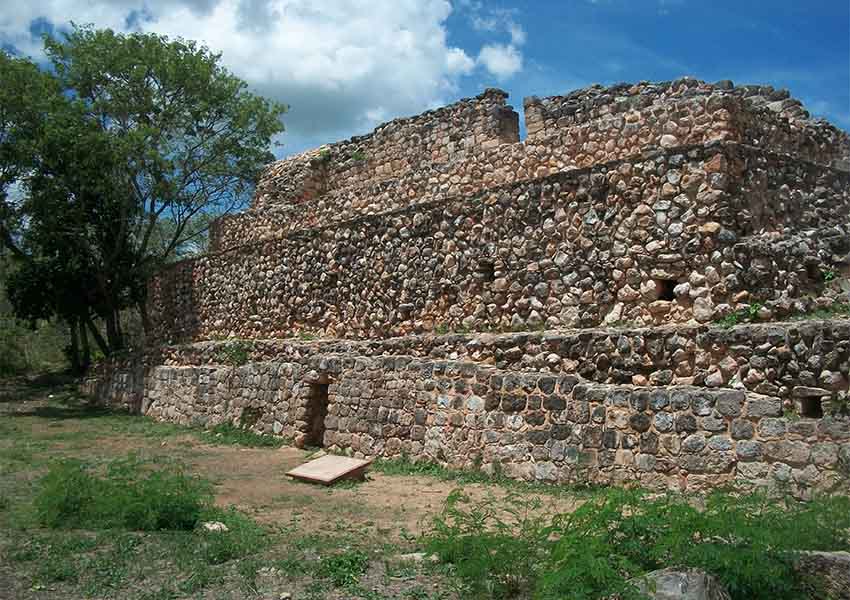
Perhaps the site’s most intriguing and famous structure is an isolated building called Satunsat, meaning “the place to get lost.” It’s also known as the Labyrinth. It has three levels with passages, stairs and narrow rooms.
The three levels of Satunsat are thought to represent the ancient Maya’s conception of the universe being in levels — the celestial level, Earth and the underworld, called Xibalba. You can see small openings on this building from the outside that look like mini windows. Unfortunately, the entrance to this building was closed during our visit, so, we couldn’t explore its interior.
The Ah Dzib Group, with several plazas and buildings, is also worth seeing. There’s another beautiful arch here that offers good photo opportunities. INAH believes a ball court in this section is one of the oldest surviving ball courts from the Maya civilization. The Mayan World Museum of Mérida (Gran Museo del Mundo Maya de Mérida) has a magnificent ball ring from this court.
While exploring the site, you’ll also spot some grinding stones that were perhaps used in daily life.

The discoveries at Oxkintok are probably not over: there are unexcavated mounds and ongoing excavation work.
You can combine a visit to Oxkintok with a trip to the nearby Calcehtok caves in the town of Calcehtok, if you’re up for some physically demanding adventure.
And if you want to see more ancient Maya sites, continue on the Ruta Puuc – a travel route with archaeological sites and caves – including Uxmal.
Looking for something a bit less strenuous? The nearby town of Maxcanú is also worth a visit, and will become even easier to visit when its planned stop on the future Maya Train is built.
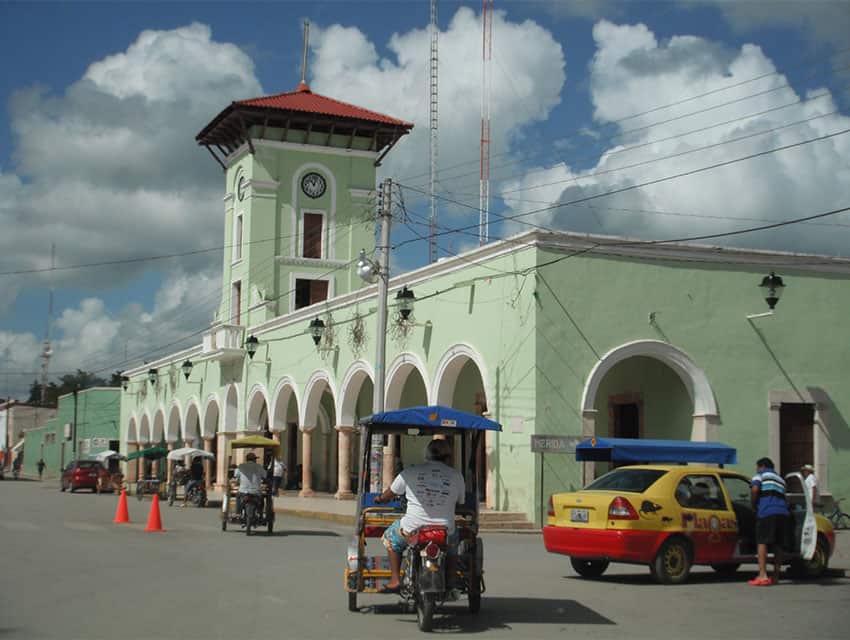
Thilini Wijesinhe, a financial professional turned writer and entrepreneur, moved to Mexico in 2019 from Australia. She writes from Mérida, Yucatán. Her website can be found at https://momentsing.com/
